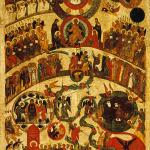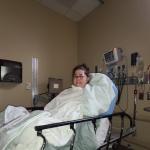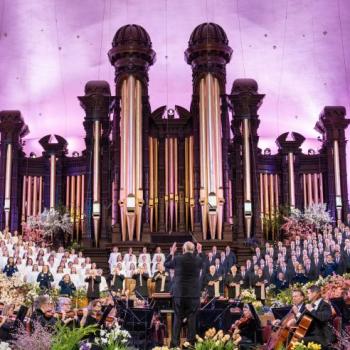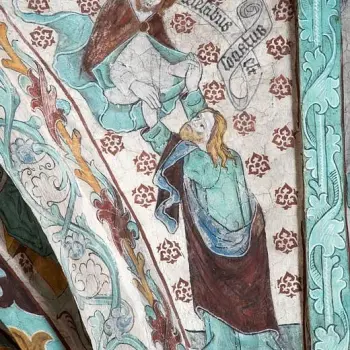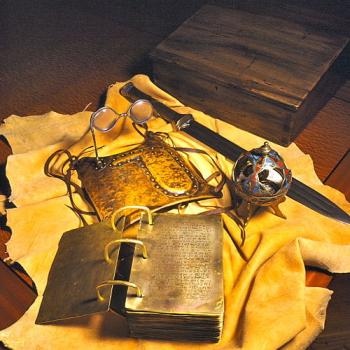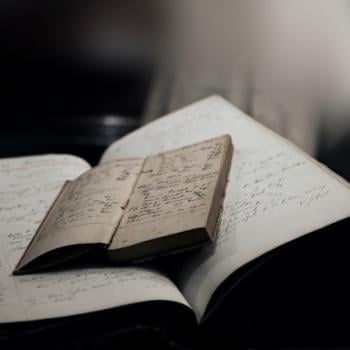Edmund and Magdalena Durfee, Tamma Durfee Miner Curtis
Lima existed before the Mormons arrived in Illinois, and from the ranks of settlers already there came several anti-Mormon activists by 1944. Just five miles to the north of Morley’s SEttlement was a non-Mormon district called Green Plains, which, given its proximity, became a staging place for raids against the Mormons.
Warsaw, which became a hotbed of anti-Mormon activity that led to the murders of Joseph and Hyrum Smith in 1844, was located just ten miles northwest of the Durfees. And 17 miles to the northeast was Carthage, which became another center for anti-Mormon stagings.
Morley Town had four stores. One person who lived in Morley’s Settlement recalled that the men were clean-shaven in those days and wore shirts–red shirts were common–that had fuller, blousey sleeves. Women wore dressed made from calico material. Lacking stoves, the settlers cooked in open fireplaces, using cranes to hold the kettles. They used corn flour more than wheat flour. Settlers enjoyed the wild strawberries, raspberries, and blackberries , as well as walnuts, hickory nuts, and butternuts.
In 1842, settlers erected a meetinghouse which served for church gatherings and Cordelia Morley’s school.
Theirs was a community of practicing religionists. Church meeting and weeknight prayer meetings were held regularly. Church authorities often visited and preached there. Saints were urged to donate money and materials for the building of the Nauvoo Temple. They participated in baptisms for the dead, apparently at Nauvoo.
In mid-June, 1944, twelve days before Joseph and Hyrum Smith were killed in Carthage Jail, several local anti-Mormons (they used that title themselves) called on President Morley on a Saturday night and gave him until Monday morning to make one of three choices for Morley’s Settlement Saints: 1. Take up arms and ride with a vigilante group to Nauvoo to arrest Joseph Smith and other church leaders; 2. Move their own families to Nauvoo; or 3, surrender their arms to the vigilantes and remain neutral during upcoming hostilities against Nauvoo Saints. President Morley wrote to Joseph Smith and explained the demands.
He was answered to call up the Mormon militia, the troops of the Nauvoo Legion who lived nearby, and prepare to defend the settlement. “If the mob shall fall upon the SAints by force of arms, defend them at every hazard,” he ordered and then added a qualifier: “unless prudence dictates the retreat of the troops to Nauvoo, in which case the mob will not disturb your women and children.” Should the “mob move towards Nauvoo,” Smith added, “either come before them or in their rear and be ready to cooperate with the main body of the [Nauvoo] legion.” And he said, “Instruct the companies to keep cool, and let all things be done decently and in order.” Finally, Smith told Morley to report to a judge and to the Illinois governor about the threats.
Mormons at Morley’s Settlement received personal threats from the “mob committee,” causing President Morley to have affidavits formally registered with the Justice of the Peace in Nauvoo and given to Joseph Smith. They contained sworn testimony about acts of cruelty inflicted on the families. One of those was signed by Edmund Durfee. Joseph Smith forwarded these formal complaints to Illinois Governor Thomas Ford and to US President John Tyler.
According to the affidavit, two mobbers approached Edmund in his field and said they came to notify him that he must comply with their demands or he would “smell thunder.”
Within weeks, Joseph and Hyrum were murdered at Carthage.
Morley’s Settlement Mormons returned home and resumed something of their normal family, farming, and community life. Peace was short-lived, however.
In September 1845, almost every Saint living in Morley’s Settlement was forced from home because their houses and outbuildings were torched by mobs.
Anti-Mormons met in a schoolhouse, within five miles of the Durfee’s place. That meeting was supposedly fired upon by someone, presumably Mormons. The Anti-Mormons took the law into their own hands and decided to expel the Mormons. (Governor Ford’s history said some persons of their own number and not Mormons fired the shots.)
They started at the southern village, Morley’s Settlement, torching two houses on September 10th. That was the Durfee’s house.
All of a sudden, the mob rushed upon Edmund Durfee and destroyed some property, and set fire to both of his buildings, they then dispersed; Brother Durfee with his family then put the fire out. The same day in the evening, they shot at a guard and missed them. The mob then fled a small distance and soon set fire to John Edmonsons house.
On the 11th, they again set fire to the buildings of Edmund Durfee, and fired upon some of his children without hitting them. (The children at home were Abraham, 18, Jabez, 17, Mary, 15, and Nephi, 10. The mobbers then set fire to Father Morley’s shops, firing at JC Snow, and thought they had killed him. They then set fire to JC Snow’s house and fled home to Lima.
On the 11th, 29 houses were burned down. The occupants were driven into bushes where men, women, and children lay drenched with rain through the night.
The morning of the 12th, the townspeople selected two men to go to their enemies and offer to sell their property at a reduced price.
That evening, the mob set fire to three more buildings.
On the 12th, Brigham Young sent word to move women, children, and grain to Nauvoo with available wagons they had and wagons sent from Nauvoo, but for the men to stay there to monitor the mob.
Solomon Hancock rode back to the settlement and found “our men and the mob are only a gun’s shot apart, the mob burning and our men impatiently looking on.”
One mobber said their plan was to finish burning Yelrome, then attack other places and drive all Mormons into Nauvoo, where all would be driven out.
By September 14th, 44 buildings had been burned. 134 teams were dispatched from Nauvoo to help remove people and goods.
Bishop George Miller led a posse and overtook some mobbers in fields. They shouted for them to stop, and when they did not, they killed three of them. “These men were as Indians blacked and striped red, disguised in their clothing so that they hardly had the appearance of white men.
The Durfee’s home was burned to the ground, but Edmund determined to harvest his crops. The refugees bought thousands of pounds of harvested grain with them to Nauvoo which was sufficient to feed everyone in Nauvoo for two years.
Continued heated responses caused the Church leadership to tell Governor Ford they would leave the area in the spring of 1846. Governor Ford issued a proclamation for everyone to be peaceful.
October General Conference, Saints were told to be ready to leave in the Spring.
Enos Curtis saw arsonists burning houses and stables again on October 18th.
Most Saints moved to Nauvoo, but some stayed to harvest crops. Troops were sent to the area and stayed with Solomon Hancock. They left to visit friends saying they would be back soon. Immediately, the mobbers went on the war path again.
“In great rage with nobody to oppose them as they passed through Morley settlement, sparing nothing that was easily set on fire, being well guarded by riflemen in the front and rear.”
On Saturday, November 15, Edmund Durfee returned from Nauvoo to Morley’s Settlement for a load of grain. He and relatives dug potatoes and gathered corn that day, took the harvest to Solomon Hancock’s, and went to bed for the night.
Charles Hancock witnessed Edmund’s death and recorded the following.
Some boys were a sleeping in our barn, it being well filled with unthreshed wheat, oats, corn, and hay. Horses in the stable and cows in the yard, it being well nigh covered with dry rubbish where feeding was done. About 11 o’clock the boys were awakened by the noise of fire, smoke and light. They saw the fire running to the barn, as the wind blew lightly that way. My brother George informed father at the house. He came to the scene in his night clothes. They raked the straw from the barn, took the horses from the stable, and let the cows out of the yard. They ran from the barn when out, as scared.
Father went to see what was there. A man stopped from behind a tree and fired a gun at him, the shot taking no effect. A shrill whistle was heard and some sixteen men arose that were secreted behind the log fence, with which the yard was built and shot at the boys in the yard, the bullets lodging in the bar and fence on the opposite side, no one being hit but an elderly man by the name of Edmund Durfee. A bullet striking him in the hollow of the neck, cutting but one thread in a woolen necktie that was around his neck and he fell dead at once.
Charles said that his father told the boys to get their guns and defend themselves.
The mob fled, setting some fires as they went back from whence they came. I followed some distance the moon shining bright. I could plainly see their tracks int eh road as they came and went back towards Lyma, a town some five miles off from whence they came. Durfee and some of his boys had been gathering their corn and digging their potatoes, and securing them at our place, so that they could be got for winter, his house and wheat being previously burned by mob violence.
Edmund’s grandson, Mormon Miner, who was young at the time, wrote in his autobiography that his grandfather was shot by a man named Snyder who did it to win a bet of two gallons of whiskey. According to Mormon, sometime after this, Snyder, in a drunken row, was shot and the wound never healed. He actually rotted alive with the stench so offensive that his friends forsook him, although he lingered for months before he died. How Mormon learned this is not known and needs to be corroborated. However, the History of the Church mentions the whiskey bet, saying the mob boasted after the murder, that they had fired at Durfee on a bet of a gallon of whiskey that they could kill him the first shot, and they won.
Such a story, if true, indicates that Durfee was the selected target, not Solomon Hancock or simply any Mormon in the rifle range. Durfee’s house was the first one torched, so if he were singled out to be shot in November, possibly somewhere, somehow, he had become a personal enemy of one or more men in the anti-Mormon crowd. There is no evidence whatsoever that Durfee or his family members were ever accused of any wrongdoing or misbehavior, let alone some major act that would warrant his being killed.
Not until the next evening, Sunday, November 16th, did the Quorum of the Twelve learn of Durfee’s murder.
On last night Elder Edmund Durfee was basely murdered by the mob in the Green Plains precinct, what shall be done to avenge his blood? The troops afford us no protection.
Nauvoo police officer Hosea Stout recorded in his diary entry for November 16 that after dinner he met with the Nauvoo Police “and there was informed that Brother Edmund Durfee had been shot dead by the mob on Bear Creek.” He then penned the details about the mobbing that he had heard.
The mob had set some straw on fire which would communicate with his barn and he on discovering the fire ran in company with some other brtheren to put it out and was fired upon by the mob who concealed in the darkness. One ball went through his breast and he died in a few moments. He had been driven into the City by the mob during their house burning in September last and had gone down there in company with some other brtheren to take care of his grain and thus feel a martyr to his religion.
Stout diaried that Edmund’s body had reached Nauvoo that day and he went to view it. “A melancholy scene,” he said.
He was in a heart-rending condition all steeped in his gore and his numerous family all weeping around him. The scene is not one to be forgotten. He was one of hte oldest in the church having been in the church almost from its rise and had passed through all the persecutions and vicissitudes of the Church and was a faithful brother.
The History of the Church recorded,
A considerable party of the mob set fire to a stack of straw near Solomon Hancock’s barn and concealed themselves. Hancock and others went out to put out the fire which was the only way to save the building, when they were fired upon by the burners, and Elder Edmund Durfee killed on the spot, many balls flew around the rest of the brtheren, but none of the rest were hurt.
Edmund Durfee’s body was buried in the cemetery east of Nauvoo up Parley’s Street.
A few hours after Durfee’s murder, before daybreak, Solomon Hancock sent his son Charles to look for officers and soldiers – the ones who were supposed to be protecting the Mormons in the area. On the way to Lima, Charles met a man named Snyder, whom he knew was of the mob party, and was afraid of him.
Charles learned that the soldiers had gone to Lima so he went there and waited at a house two hours until the soldiers came. He told them what had happened, and they told him to go home and they would be there soon. When Charles reached his house, his father sent him to Carthage to find Major Warren. “I was much abused by the troops before I could get to Major Warren and General Demmin.” Officers told Charles they would be there to arrest the men the Hancocks thought were in the mob party if Charles could show them where they lived. Major Warren arrived, and Charles helped them locate the suspects. They took into custody 14 out of 16.
The next morning, November 17th, the prisoners were brought to the Hancock house “to see if any could be recognized.” But the Hancocks had been able to see the attacker because of the nighttime darkness. With officers present, Solomon Hancock asked the accused if any of them had anything to say against his character. Had he not been an honest man, a true patriot to the laws of country and God? They all agreed they knew nothing against the Hancocks.
That same day, November 17th, Apostle Orson Hyde, acting on behalf of the Quorum of Twelve Apostles, wrote to Major Warren.
Durfee was murdered by a mob who fired a quantity of straw to decoy him out, and while he was engaged in raking the straw so that the fire might not communicate with the buildings, six shots were made at him, one of which took effect in his breast and he died immediately. His body had been brought to Nauvoo for burial.
Mr. Durfee was one of the most quiet and inoffensive citizens in these United States and from our acquaintance with him, and from the nature of his business in securing his crops, we are persuaded that his murder was wholly unprovoked.
Elder Hyde then asked Major Warren if his men would protect the Saints while gathering their crops or should the Church send in a sufficient number of men to protect Saints in the south end of the county?” What the major answered, if he did, is not known.
The fourteen suspects were taken to Carthage and charged with killing Edmund Durfee. When court was convened, they were arraigned and proofs offered that they, plus the two that escaped by taking a steamboat to Warsaw, were the ones who had loaded their guns at Lima, taken their liquor, gone to the Hancock’s corral, set fire, and shot at the boys and men who were putting out the fire, and theme returned to Lima the way they had come.
But even though Edmund had been killed and the Hancock family threatened,
the prisoners were discharged. The prosecuting attorney exclaimed Justice cannot be done in Hancock County, Illinois.
The Quincy record book noted that the prisoners were brought before Justice Stevenson for trial, in which setting the charge was withdrawn because “it being found impossible to obtain a conviction in the present state of this county.”
Meanwhile, anti-Mormons in Warsaw, a hotbed of hatred towards Mormons, called a citizen’s meeting on November 17th. There, “for the purpose of preventing a wrong impression upon the public mind,” they issued a resolution opposing the murder and recent house burnings. They proclaimed brief in “law and good order” and offered pledges to do all in their power to ferret out and bring to punishment those guilty of hte recently lawbreaking. They published their “outrage” in the anti-Mormon Warsaw Signal on November 19, along with an article titled “Murder” wherein the editors denounced the perpetrators and urged that all anti-Mormons “denounce the act” and “not spare the actors.” But showing how un-outraged they really were, on the same page, the editors published a headline, “Murder of Durfee,” under which they had the audacity to suggest that Durfee was killed by other Mormons! Anti-Mormons would not need to resort to “the contemptible trick of decoying a man out at night,” the editors argued with fractured logic, and, besides, Durfee was not the kind of person “Whereon to wreak the vengeance of vindictive Anti-Mormons.” Because Mormon witnesses disagreed about how many shots were fired, the article contended, they must be making up the story and lying. Very likely, the hatemongers posited, Durfee might have “become obnoxious to the Saints,” and so they killed him and then blamed the murder on Anti-Mormons to cast suspicions “on the Anties, thus creating prejudice against their enemies and sympathy for themselves.”
Brigham wrote some of his reactions to the lawlessness that took Edmund’s life. In a letter to Apostle Wilford Woodruff (who was in Liverpool, England) dated November 19, 1845, Elder Young vented his feelings a little:
There is at present a seeming cessation of trouble here but it is like a wound healed on the surface but it eats deep the affected parts as the Anties (that is, Anti, to Law, order, virtue, morality, or humanity, and every other good quality of a citizen) are not content but are breathing out their threats and have put into practice the burning of Mr. Rice’s house on Camp Creek and of Solomon Hancock’s steaks and the Murder of Mr. Durphy are crimes which has transpired very recently and have made us Mourn at the depravity of men knowing that these crimes are committed while an Armed force are in the County for hte prosecution of all such offenders. They are blind to the outrages of their own clan but … arest our brtheren make searches, annoy us with their filthy and detestable practices. We verily have seen the frailty of all government and long to see the kingdom of God spread its dominion over the whole eart and reign predominant.
On November 24, nine days after the murder, Apostle Willard Richards stated in a letter to Theodore Turley that the accused would not be tried.
We have learned that the persons who murdered Edmund Durfee as also those who burned Rice’s and Hick’s houses were discharged by the magistrate without examination. Our brethren went according to Major Warren and Mr. Brayman’s request as witnesses thereby fulfilling their part towards magnifying and making the laws honorable, but returned unheard, and the farce closed sooner than he had anticipated, without even a grand jury on the case.
Governor Ford in his History of Illinois, admits that “The perpetrators of this [Durfee] murder were arrested and brought before an anti-Mormon justice of the peace and were acquitted, though their guilt was sufficiently apparent.”


